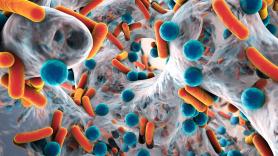3. How to encourage research and development of new antibiotics
If the current situation continues, by 2050 more people will die of resistant bacterial infections than cancer. However, “the investment in research into new antibiotics in the United States is 15 times smaller than in cancer research,” noted Laura Marín, head of Secretariat for the JPIAMR program in Sweden. In fact, “several companies are turning their backs on antibiotics research,” warned Seamus O’Brien, director of the GARDP consortium.
In general, explained O’Brien, the limited investment in this field is due to the fact that the estimated return is much less than that of other indications. Companies “don’t see the market opportunities to justify this commitment.”
According to Joan Bigorra, deputy director of Strategy and Innovation at ISGlobal Barcelona, there should be incentives to encourage public-private collaboration, like the ones that were introduced to promote research into rare diseases without treatment. So, the incentives should be tied to sharing “priorities, risks and financial and social benefits, and to ensuring transparent pricing.”
For Seamus O’Brien, “the public health challenges involved in antibiotics resistance require unprecedented levels of coordination and cooperation,” and he also believes it is necessary to encourage public-private collaboration, as it will “have a significant impact on the development of new antibacterial interactions.” However, as Laura Marín noted, the final phase of clinical trials is important but, in general, “there is a lack of innovative proposals in the earliest phases of research.” In fact, “current lines only offer partial coverage of priority pathogens in the long term,” warned Gemma Buckland-Merret, head of the Science Lead Drug Resistant Infections Programme at the Wellcome Trust in London.
Jordi Vila concluded with “mixed feelings: hopeful, given the high quality of the proposals for new molecules in the initial phases of research; but concerned because we are facing a huge hurdle in taking molecules through to the clinical development phase.”
And time waits for no one.



